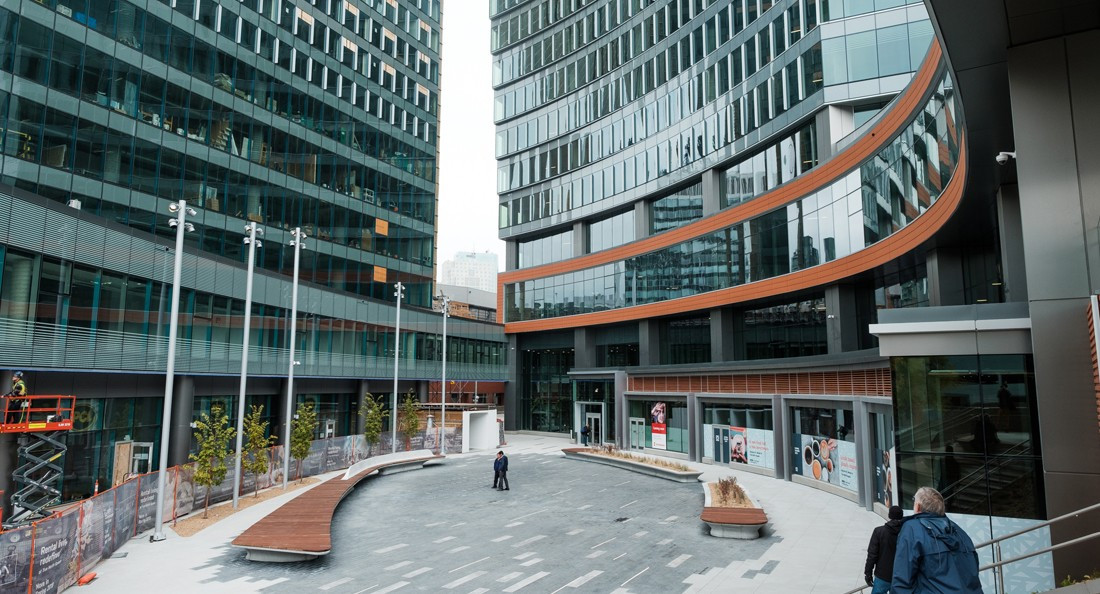Shaky policy foundations
The City’s response to True North Square affordable housing concerns
In response to rising concern that the True North Square (TNS) project, one of the largest property development projects in the history of Winnipeg’s downtown, doesn’t include an affordable housing component (despite being subsidized by the municipal and provincial governments), the City of Winnipeg has now included an amendment that attempts to address the issue.
Cindy Gilroy, city councillor for Daniel McIntyre and one of the creators of the amendment, says for the kind of support that TNS would be looking for, “the city has never had an affordable housing component. Its always been part of the provincial program and the provincial ask.”
The Province of Manitoba and City of Winnipeg can use the Tax Incremental Financing (TIF) mechanism to stimulate investment or certain kinds of property development in a specific area by using the increase in taxes generated by the development to support property developers or other social programs.
The Province has been historically responsible for integrating a component that prioritizes affordable housing into their TIF program, but the Pallister government is not applying that component to TNS, because the project was not originally the right size for TIF. The project applied to expand to a size large enough for TIF funding, but still did not have an affordable housing component, and the Province chose not to enforce the requirement.
“So when this came forward from the province, there was no (affordable housing component in the) ask, because there’s no program available (for this size of project),” Gilroy says. “There are things that are in the works (municipally), but as of today, we don’t necessarily have a program.”
Councillors Gilroy and Jenny Gerbasi put forward an amendment that requires “that 10 per cent of the incremental taxes that we would get on the project if it’s developed would go back into affordable housing,” Gilroy says.
This means that the taxes from the project would go into a fund for the City to use for its own affordable housing projects, which Gilroy says are “coming down the pipe.” Historically, housing in Manitoba has been the domain of the Province rather than municipalities, so at this time, there isn’t an affordable housing requirement that would be applicable to TNS.
“Would we have liked to see more? Absolutely, you know, we always want to see more, but I think this is moving, pushing the agenda forward, and we’re starting to have that critical debate that we need to have at council.”
Dr. Jino Distasio, director of the Institute for Urban Studies at the University of Winnipeg, says “what the True North project has brought to light is that in 2018, in Winnipeg, we would like to see development occur in (particular) phases with (particular) kinds of parameters,” though he questions the usefulness of the public callout of the project.
When it comes to pushing for more affordable housing, Distasio says “the missing thing here is not calling (developers) out to say do the right thing, but having the teeth behind it,” which could mean any number of municipal or provincial programs that reward property developers for providing affordable housing or mixed-use space.
“If the province or others are serious about it, and we’re in the middle of a civic election, there are municipal tools, and there are certainly provincial tools to require in the downtown, to require projects like this that are attracting all levels of government funding (to prioritize affordable housing). There may even be some federal dollars,” Distasio says.
“The one-offs are good,” he says of the municipal response to concerns over TNS, “but I would say I’d rather see us focus in on a real, clear, comprehensive interprovincial strategy looking at growing the range of affordable housing units in Winnipeg as a whole, and then to layer in specific programs that may target certain types of area characteristics.”
Published in Volume 73, Number 5 of The Uniter (October 4, 2018)







